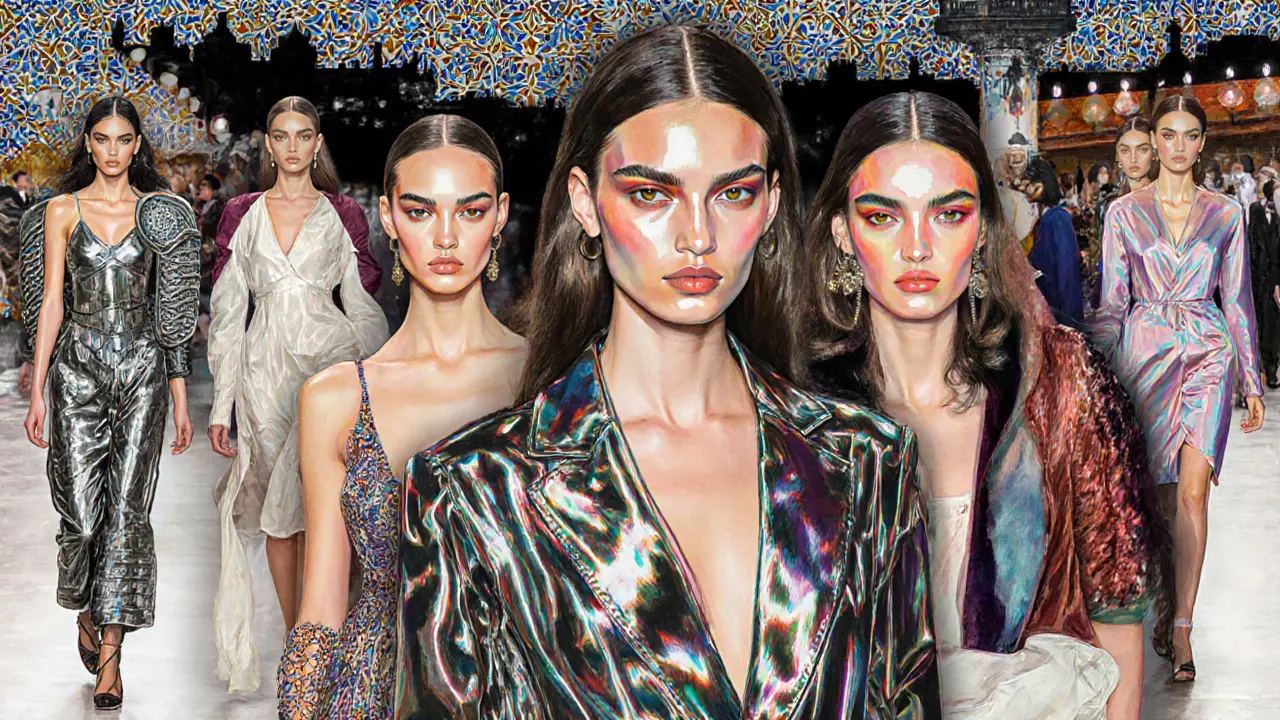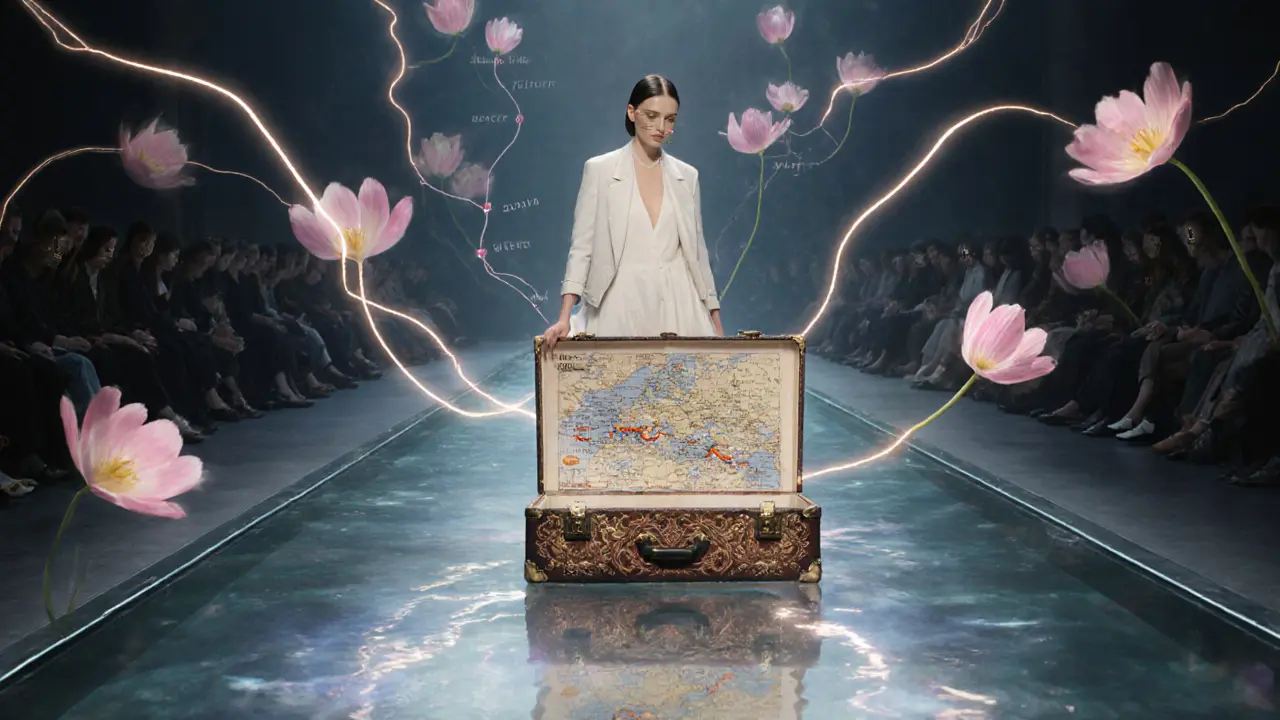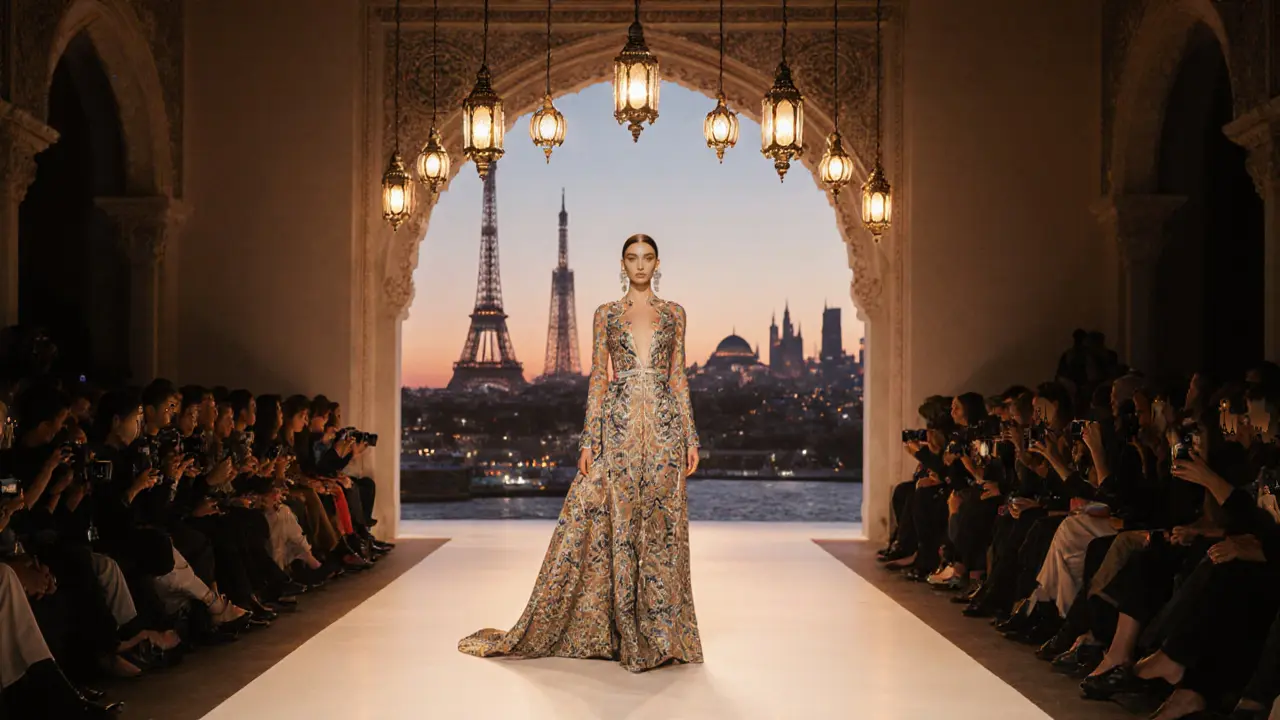Quick Look - TL;DR
- Çığla Şıkel - Miss Turkey 1997, New York runway regular.
- Tülin Şahin - “Supermodel of Turkey,” L'Oréal ambassador.
- Funda Önal - Turkish‑British, Burberry & Chanel veteran.
- Deniz Akdeniz - Vogue Italia cover model.
- Nigar Hazar - Dior campaign star.
- Gül Öztürk - Balenciaga runway regular.
- Sinem Aydın - London Fashion Week staple.
- Aylin Aslan - Victoria's Secret runway debut.
- Sedef Kızıl - International ad icon.
- Kaya İnanç - Male model, Armani & Hugo Boss faces.
Why Turkish Models Matter on the World Stage
Turkey sits at the crossroads of East and West, and its fashion talent reflects that blend. Over the past three decades, a handful of Turkish models have cracked the toughest market gates-Paris, Milan, New York, and London-turning hometown fame into global credibility. This guide walks you through the careers of the ten most influential Turkish faces, showing how they built international portfolios, the brands that trusted them, and the cultural impact they created.
Understanding the Rise of Turkish Talent in Global Fashion
Before we dive into the individual stories, it helps to grasp why Turkish models started gaining global attention. The early 2000s saw a boom in Turkish TV beauty contests, which acted as scouting grounds for agencies abroad. Simultaneously, Istanbul’s own fashion weeks grew in quality, giving local talent runway experience that matched European standards. With a distinctive Mediterranean look-high cheekbones, dark hair, and striking eyes-these models offered a fresh aesthetic that resonated with luxury brands looking for diversity.
Origins and History of Turkish Modeling
Modeling in Turkey traces back to the 1970s, but it wasn’t until the Miss Turkey pageant went international in the 1990s that the industry truly accelerated. Agencies like Ford Models Turkey opened satellite offices in New York, funneling promising faces to the major fashion capitals. By the early 2000s, Turkish models began appearing on the covers of Vogue Italia and walking for designers like Dior and Chanel.
Core Components of a Global Modeling Career
A typical path involves three stages: local discovery (beauty contests or agency scouting), international exposure (runway shows, editorials), and brand partnership (campaigns, ambassador roles). Turkish models often leverage strong family support and multilingual abilities-many speak English, French, or German-to ease the transition into foreign markets.
How Turkish Modeling Differs from Western Counterparts
Western models traditionally come from a pipeline of teen scouting agencies, whereas Turkish talent usually matures through national pageants and local fashion weeks. This background gives Turkish models a blend of poise and media experience that can be a selling point for luxury houses seeking seasoned professionals rather than raw newcomers.
Who Uses Turkish Models and Why?
Designers, advertising agencies, and even tech brands opt for Turkish models to inject a Mediterranean flair that appeals to both Eastern and Western audiences. Brands also value the models’ work ethic and adaptability, qualities honed by navigating Turkey’s fast‑changing fashion landscape.
Spotlight on the Top 10 Turkish Models Who Went Global
Below is a curated list of the most influential Turkish faces who broke into the world’s top fashion circles. Each profile starts with a micro‑data definition that search engines love.
1. Çağla Şıkel - Miss Turkey 1997, Ford Models alumnus, New York runway regular.
After winning Miss Turkey, Şıkel signed with Ford Models and quickly booked shows for designers like Gianni Versace and RalphLauren. Her signature walk and charismatic presence made her a staple on the New York Fashion Week schedule throughout the early 2000s. Today she mentors aspiring Turkish talent via her social platforms.
2. Tülin Şahin - “Supermodel of Turkey,” L’Oréal ambassador.
Şahin’s breakout came when she was featured in a L’Oréal Paris campaign that aired across Europe. She walked New York Fashion Week’s Metropolitan line and appeared in editorials for Harper’s Bazaar. Her versatile look-soft yet striking-earned her contracts with luxury hotels for promotional events.
3. Funda Önal - Turkish‑British model, Burberry & Chanel veteran.
Born in London to Turkish parents, Önal broke through after being cast in Burberry’s 2010 spring‑summer campaign. She later walked for Chanel’s haute couture shows and starred in a Dior fragrance commercial that aired globally. Her bilingual ability (English/Turkish) helped her land diverse contracts across Europe and Asia.
4. Deniz Akdeniz - Vogue Italia cover model, high‑fashion regular.
Akdeniz’s first major breakthrough was a full‑page spread in Vogue Italia (2014). She subsequently walked for Gucci, Prada, and Dolce & Gabbana, and has been featured in campaigns for luxury watches. Her striking dark hair and defined jawline make her a favorite for men's fashion editorials.
5. Nigar Hazar - Dior campaign star, runway staple.
Hazar entered the global scene via a Dior “J’adore” campaign that highlighted her elegant poise. She has since walked for Saint Laurent and appeared in editorial shoots for Elle (France). Her background in ballet adds a graceful movement quality prized by designers.
6. Gül Öztürk - Balenciaga runway regular, street‑style influencer.
Öztürk’s edgy look, combined with a strong social media presence, landed her a spot on Balenciaga’s Spring2022 runway. She leverages Instagram to showcase behind‑the‑scenes moments, bridging the gap between high fashion and street culture.
7. Sinem Aydın - London Fashion Week staple, versatile commercial model.
Aydın moved to London in 2016 and became a frequent face for the London Fashion Week’s emerging designers. She’s also the face of a UK‑based skincare line, proving her adaptability across both runway and commercial work.
8. Aylin Aslan - Victoria’s Secret runway debut, global lingerie icon.
Aslan’s first high‑profile gig was walking the Victoria’s Secret Fashion Show in 2019, making her the first Turkish model to do so in the modern era. She has since fronted campaigns for a major swimwear brand and appears in lifestyle magazines worldwide.
9. Sedef Kızıl - International ad icon, multi‑campaign veteran.
Kızıl’s portfolio includes ads for high‑end automobiles, luxury watches, and perfume houses. Her ability to convey both strength and softness in front of the camera makes her a go‑to model for brands targeting a sophisticated audience.
10. Kaya İnanç - Male model, Armani & HugoBoss faces.
While most Turkish names on this list are women, Kaya İnanç broke barriers as a male model, becoming the face of Armani’s 2021 fall campaign. He also stars in HugoBoss fragrance ads, showing that Turkish talent shines on both sides of the runway.

Comparing Their International Breakthroughs
Below is a snapshot of when each model made their global splash, what brands propelled them, and a quick note on their current focus.
| Model | Year of Global Breakthrough | Signature Brand(s) | Current Focus |
|---|---|---|---|
| Çağla Şıkel | 1999 | Ford Models, Versace | Mentoring & TV hosting |
| Tülin Şahin | 2002 | L’Oréal, Met Gala | Beauty brand ambassadorship |
| Funda Önal | 2010 | Burberry, Chanel | International runway |
| Deniz Akdeniz | 2014 | Vogue Italia, Gucci | Editorial & luxury watches |
| Nigar Hazar | 2015 | Dior, SaintLaurent | High‑fashion campaigns |
| Gül Öztürk | 2022 | Balenciaga, Instagram | Street‑style influencer |
| Sinem Aydın | 2017 | London Fashion Week, skincare | UK commercial work |
| Aylin Aslan | 2019 | Victoria’s Secret, swimwear | Lingerie & activewear |
| Sedef Kızıl | 2013 | Luxury autos, watches | Global ad campaigns |
| Kaya İnanç | 2021 | Armani, HugoBoss | Male fashion & fragrance |
How These Models Shaped Turkish Fashion’s Global Reputation
Each of the ten models acted as a cultural ambassador, proving that Turkish aesthetics belong on the world’s most prestigious runways. Their success sparked a wave of new talent agencies in Istanbul, increased foreign investment in Turkish fashion weeks, and encouraged young aspirants to aim beyond local boundaries.
What It Takes to Reach the International Runway
If you’re curious about walking the same path, the basics are surprisingly straightforward: relentless networking, multilingual fluency, and an unwavering work ethic. Below are the key steps any aspiring model should consider.
Step‑by‑Step Guide for First‑Timer International Hopefuls
- Secure a reputable local agency-look for ones with proven overseas placements.
- Build a professional portfolio featuring high‑resolution headshots and full‑body shots.
- Develop language skills-English is essential; French or Italian are bonuses.
- Attend casting calls in fashion capitals-many agencies hold satellite auditions in Istanbul.
- Maintain physical health and skin care-brands love consistent, camera‑ready looks.
- Network on social media; tag designers and use industry hashtags.
Safety and Ethics in the Global Modeling World
While glamour is the headline, safety is paramount. Verify agencies through official directories, avoid up‑front payment schemes, and always have a trusted friend or manager aware of your schedule. Modeling contracts should be read carefully for exclusivity clauses and payment terms.
Frequently Asked Questions
What defines a "global" Turkish model?
A global Turkish model has worked with at least one internationally recognized brand, walked in a major fashion capital (Paris, Milan, New York, or London), or appeared in worldwide publications such as Vogue, Elle, or Harper’s Bazaar.
How can I get discovered by an overseas agency?
Start with a strong local agency that has connections abroad. Attend open casting calls advertised on agency websites, and maintain a polished digital portfolio on platforms like Instagram and Model Mayhem. Consistent engagement with industry hashtags can catch the eye of scouts.
Is it necessary to speak multiple languages?
English is the baseline for most international work. Knowing French or Italian opens doors in Paris and Milan, where designers often conduct fittings and castings in their native tongue.
Do Turkish models still face any cultural barriers abroad?
Occasionally, stereotypes about ethnicity can surface, but the industry’s focus on uniqueness actually works in the model’s favor. Successful Turkish models turn cultural distinctiveness into a selling point, as seen with the careers listed above.
Can male models from Turkey achieve the same visibility?
Yes-though the market is smaller, male models like Kaya İnanç have landed high‑profile campaigns with Armani and HugoBoss. The key is aligning with brands that value a sleek, Mediterranean look.

Conclusion: Turkish Talent Keeps Redefining Global Runways
From Miss Turkey winners to runway regulars in Paris, these ten models prove that the Turkish fashion scene is a powerful pipeline for international talent. Their stories show that with the right mix of exposure, determination, and cultural confidence, any aspiring model can aim for the world’s biggest stages. Keep following the next wave of Turkish faces-who knows, the next name on this list could be you.
Ready to explore more about Turkish fashion? Share your favorite model in the comments, follow us for deeper industry insights, and stay tuned for the next spotlight on rising Turkish designers.
Disclaimer: Some links may be affiliate links, but all recommendations are based on research and quality.


Totally love how these Turkish models are finally getting the spotlight they deserve!
The rise of Turkish talent lines up with the 2000s surge in Istanbul Fashion Week, and agencies like Ford Models Turkey have since placed dozens of faces in NYC and Paris shows. 📈 This shift also mirrors the broader industry push for Mediterranean looks, which brands tout for their exotic yet familiar vibe. 🎯
When you examine the trajectories of these Turkish models, a pattern of cultural ambassadorship emerges that transcends mere runway presence. Their Mediterranean aesthetic, characterized by high cheekbones and dark, expressive eyes, offers a visual bridge between East and West that brands eagerly exploit. This visual hybridity resonates not only with fashion editors but also with global consumers seeking diversity in luxury narratives. Moreover, the success stories of figures like Çağla Şıkel and Funda Önal have inspired a new generation of aspiring talent within Turkey’s burgeoning fashion schools. These institutions now incorporate multilingual curricula and international internship programs, directly responding to the industry’s demand for adaptable models. In parallel, Istanbul’s own fashion weeks have upgraded production values to match the standards of Paris and Milan, creating a homegrown platform for exposure. The synergy between local showcases and foreign agency scouting has accelerated the pipeline from national pageants to global campaigns. Economic analysts note that the rise of Turkish models correlates with increased foreign investment in Turkey’s textile and apparel sectors. Brands such as Dior and Balenciaga have cited the “fresh perspective” of Turkish faces when launching new collections, indicating a strategic marketing angle. Social media further amplifies this impact, as models like Gül Öztürk leverage Instagram to broadcast runway moments to millions of followers worldwide. This digital reach not only humanizes the designers but also democratizes fashion consumption across continents. From a sociocultural standpoint, the visibility of Turkish models challenges monolithic beauty standards that have long dominated Western runways. Their presence encourages a reevaluation of what constitutes “high fashion” and opens doors for other underrepresented regions. As the industry continues to globalize, the stories of these pioneers will likely become case studies in fashion curricula worldwide. Ultimately, their collective influence demonstrates that talent, when coupled with strategic cultural positioning, can reshape the very map of international fashion.
The metric-driven success of Turkish models is undeniable; agencies quantify placements by runway count and campaign spend. Your post correctly lists the milestones, yet it underplays the systemic networking that fuels these bookings. In Turkey, agency alliances function as a high‑frequency referral network, accelerating talent flow to Europe. This infrastructure is the real catalyst behind the data you present.
While your points are valid, note that “placements” should be plural without an article in that context.